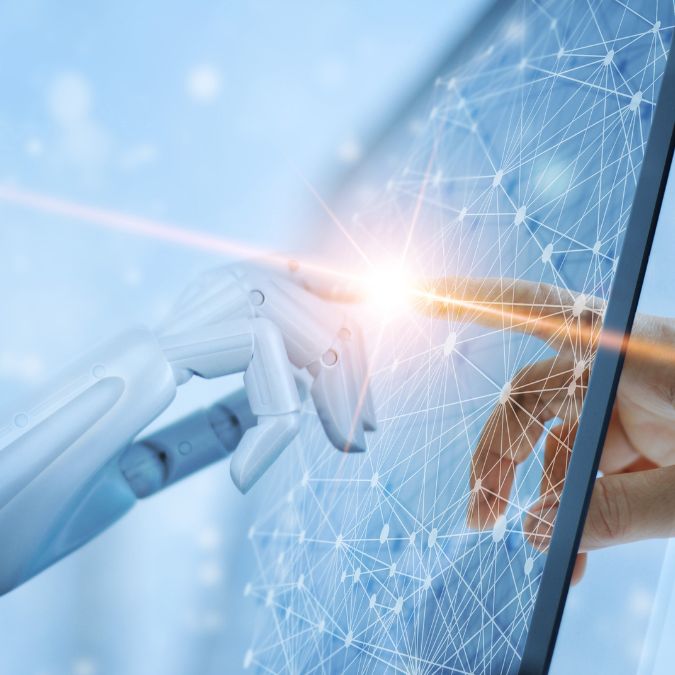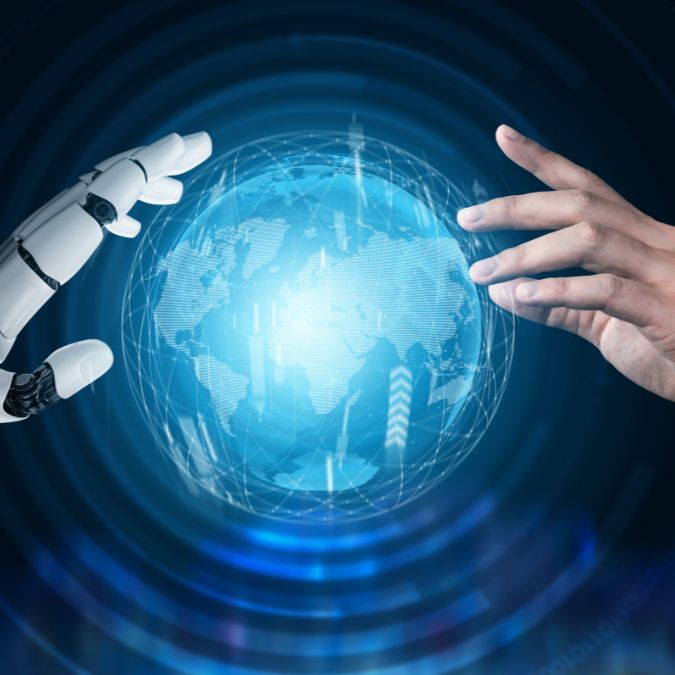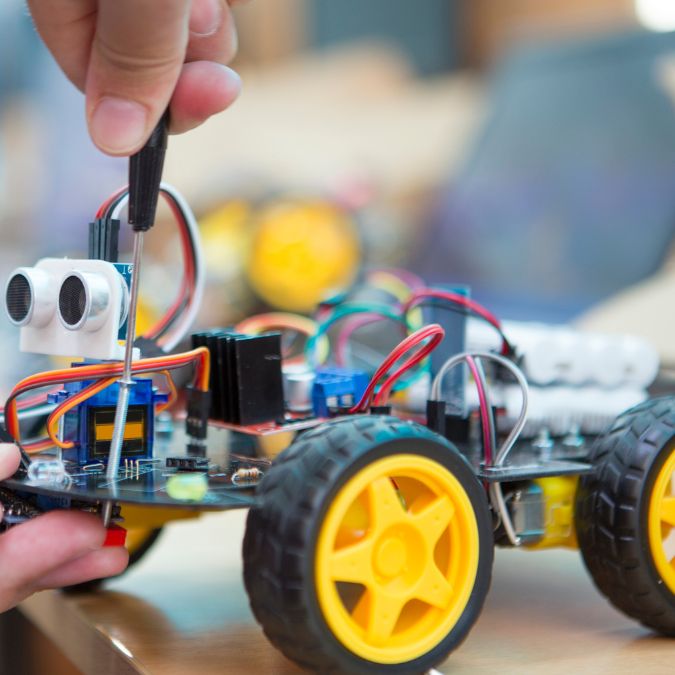





Robots by Definition | Definition of a Robot
Robots are automated devices capable of performing certain functions with minimal to no human input. They do so both quickly and accurately. The domain of robotics, encompassing the creation, engineering, and management of robots, has seen significant progress over the past five decades.
Origins of Robots
The term “robot” originates from the old Church Slavonic word “robota,” meaning “servitude,” “forced labor,” or “drudgery.” Additionally, this word shares roots with similar terms in German, Russian, Polish, and Czech, emerged from the central European serfdom system. Tenants would pay their rent through compulsory labor or service.
The initial versions, as recognised today, were developed in the early 1950s by George C. Devol, an inventor hailing from Louisville, Kentucky. He designed and secured a patent for a reprogrammable device known as “Unimate,” derived from “Universal Automation.” Over the following ten years, he endeavored to market his invention within the industry, albeit without much success.
Robots as Companions| Robots as Helpers
Sony’s Aibo, which stands for Artificial Intelligence Robot, is an example of robotic pets intended for personal entertainment. The first Aibo was introduced in 1999, and over the years, Sony has released several models, each more advanced than the last. Another example of a helper is the Pepper robot, developed by SoftBank Robotics. Pepper is designed to be a humanoid companion and is capable of recognising and responding to human emotions. Launched in 2014, Pepper is equipped with a range of sensors and cameras. These features allow it to interpret human emotions through facial expressions and voice tones. Therefore enabling it to engage in meaningful interactions with people.
An increasing amount of research on companion robots indicates that they can alleviate stress and loneliness and even assist the older population in maintaining their health.
Applications
The sheer variety of robots highlights the diversity of tasks they are designed to undertake. While robots excel at certain tasks beyond human capability, other roles are still best suited for human hands.
Some examples of such tasks include:
Repetitive Manufacturing Tasks: They can perform the same action, such as assembling components or packaging products, with perfect consistency and without fatigue, 24/7.
High-Precision Operations: In applications requiring extreme precision, such asthe assembly of intricate mechanical devices, robots can achieve accuracy far beyond human capabilities.
Hazardous Environment Work: Robots can operate in dangerous environments without risk to human life. For example, toxic atmospheres, extreme temperatures, or areas with high radiation levels.
Heavy Lifting and Material Handling: Industrial Robots can lift and move heavy objects repeatedly without risk of injury or fatigue, improving safety and efficiency.
Exploration in Inaccessible Areas: Robots can explore environments that are inaccessible or dangerous for humans, such as deep-sea exploration, space missions, and disaster zones.
Surgical Procedures: In medicine, robotic systems can perform or assist in surgical procedures with a level of precision and control that can reduce patient recovery time and improves outcomes.
Quality Inspection: With high-resolution imaging and machine learning algorithms, robots can identify defects and quality issues with greater accuracy.
Agricultural Tasks:This variety can be used in agriculture for tasks such as planting, weeding, and harvesting. They can work around the clock. Thus optimising crop production.
Cleaning and Sanitization: Robots can perform cleaning and sanitization tasks in various environments, including hospitals, schools, and public spaces.
Additionally, robots are utilised in creating music, monitoring coastlines for hazardous creatures, aiding in search and rescue operations, and even in food preparation tasks.
The Diverse World of Robots
Although the applications of robotics are diverse, the following are just some examples of robots in the everyday world:
Autonomous Vehicles: Featuring sensors and navigation systems, autonomous vehicles like Google’s self-driving car (Waymo) can drive without human intervention. These vehicles are transforming urban mobility and logistics with their capabilities for autonomous navigation.
Consumer: Designers create robots such as Roomba, the vacuuming robot, for personal use, offering convenience and entertainment through tasks like household cleaning, thus demonstrating the integration of robotics into daily life.
Delivery: Innovations like Starship Technologies’ delivery robots and Zipline’s drone delivery service automate the logistics of delivering goods ranging from food to medical supplies, showcasing how robotics can streamline and enhance delivery services.
Disaster Response: In emergency situations, military robots like PackBot are designed for various applications. These include surveillance, reconnaissance, bomb disposal, and hazardous material handling in both military and civilian environments.
Drones: The DJI Phantom 4 represents a cutting-edge consumer drone, crafted by DJI, a forefront developer of unmanned aerial vehicles (UAVs). Engineered primarily for capturing aerial photos and videos, its adaptable nature makes it suitable for tasks including surveillance, inspection, and mapping.
Continued
Educational: Robotics kits and educational platforms like Lego robotics. LEGO Robotics refers to the creation and programming of robots using LEGO’s specialised robotics kits. Creators design these to engage students in STEM education, providing hands-on experiences with coding and engineering principles to foster problem-solving and creativity.
Entertainment: Entertainment-focused robots engage audiences with performances and interactive experiences, showcasing the potential of robots to entertain and inspire wonder.
Humanoid: Humanoids explore advanced robotics applications in locomotion and interaction, reflecting the challenges and aspirations of creating robots that mimic human form and function.
Medical : The application of robotics in healthcare, offers advanced surgical techniques and personalised care.
Military & Security: Robots used in military and security contexts perform critical tasks in surveillance and logistics, enhancing safety and operational capabilities in challenging environments.
Research: This type push the boundaries of robotics technology, exploring new capabilities and potential applications for future robotics innovations.
Service: Robots can perform a variety of service tasks, from cleaning to emergency response. This indicates the growing role of robotics in service sectors and public safety.
Social: These robots aim to engage with humans in meaningful ways, providing companionship and assistance, and reflecting ongoing efforts to integrate robots into social contexts.
Aquatic: They operate in water for tasks such as data collection and infrastructure inspection, demonstrating the versatility of robotics in exploring and monitoring marine environments.
Aerospace Robots: In the field of aerospace,space-oriented robots such as Mars rovers expand our capabilities in space exploration.
The Industrial Revolution
Robots, once confined to the realms of literature and fantasy, have become sophisticated tools driving efficiency in manufacturing. This has led to the creation of complex industrial robots. They are capable of executing tasks with unparalleled precision.
Our team at Automated Solutions Australia integrates industrial robots, as a robotic system used in the manufacturing sector.They are autonomous (or collaborative), programmable, and able to move along at least three axes.
Common uses for these robots involve tasks such as welding, painting, assemby, machine tending, placing packaging and labeling, stacking on pallets, inspecting products, and conducting tests. They perform these tasks with exceptional durability, speed, and accuracy, and also handle materials.
The Future Is Now: Robots and Society
The integration of robots into daily life is transforming not only how we work but also how we live. Reflecting on the origins of robots it’s clear that robotics has transitioned from speculative fiction to a foundational element of technological advancement and societal progress.
The future of robot technology is not just about automation but about creating synergies between humans and machines to tackle the world’s most pressing challenges. With continuous advancements in robotics, we stand on the brink of a new era where robots are an integral part of shaping a more efficient, safe, and innovative society.
About ASA – Robots are our Speciality
At ASA, our mission is to bring the world’s best practices to the flexible automation sector. Our goal is for our customers to have an advantage over their competitors. Our engineering team develops solutions to improve throughput, quality and productivity while giving a quick return on investment. We continue to offer excellent customer service world wide, integrating FANUC industrial robots, ensuring they constantly operate in top condition and achieve high productivity. Our team understands there is no one-fits-all solution and that is why we offer custom services.







Send an enquiry:
For a list of our Robotic Applications, click here.


